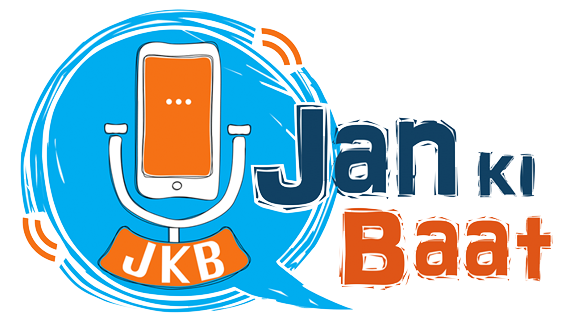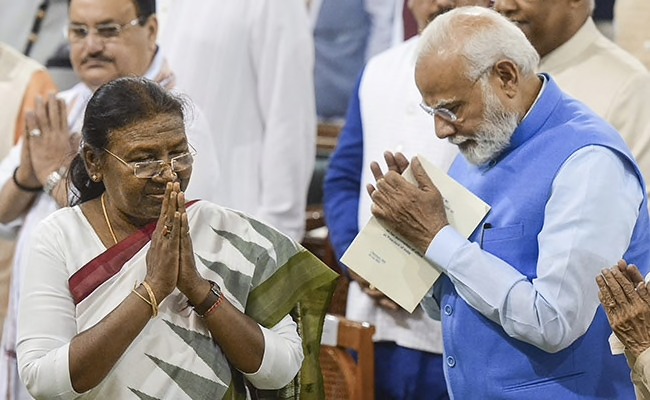Draupadi Murmu has scripted history by becoming the first leader from the tribal community to become the Indian President. She is also the youngest person and the second woman to occupy the highest office of the country.
It has taken 75 years after becoming an independent nation and 70 years since becoming a republic for our country to achieve this feat.
Detractors have derided this tremendous feat as tokenism by Modi Government. They’ve questioned whether the rise of Madam President Murmu is a true step in empowering the tribal population by BJP. But here are a few facts that will put things in perspective.
It was the government of late Atal Behari Vajpayee which formed a separate Ministry of Tribal Affairs in the year 1999. It was the first step towards the vision to empower the tribal population in India who had suffered under the previous regimes which looked at them as a mere vote bank while the Left parties exploited their poverty by making them plunge into violence and indulging in poverty porn.
The Left-wing extremists indulged in a propaganda that justice can be achieved for tribal community by only picking up the guns which ended up as a disaster for the nation. Continued neglect by Congress party resulted in lack of development in North Eastern states and in states like Jharkhand, Chhattisgarh which has around 30% tribal population.
Ever since Narendra Modi took oath as the Prime Minister the transformation of tribal areas began in right earnest. One of the pillars was the “Act East” policy which paid rich dividends in the empowerment of tribal areas.
North East saw unprecedented development. Roads were constructed at dramatic speed and trains entered into the remote corners of Manipur and Arunachal Pradesh got its first airport. These development activities resulted in tribal welfare in north-east states which has a huge tribal population.
The development was not just limited to North Eastern states but specific targeted schemes were initiated which were to be delivered to tribal community.
Here are a list of some of the initiatives taken by the Modi Government for the welfare of the indigenous tribal communities.
1) 1.28 crores Tribal homes are now fitted with piped water Connections through Jal Jeevan Mission
2) 38 lakh houses have been constructed under PM Avas Yojana for tribal population
3) 1.45 lakh toilets have been built under Swachh Bharat scheme in tribal areas
4) 82 lakh health cards have been given to tribals under Ayushman Bharat Health scheme
5) Ekalavya Model Schools exclusively for tribals has seen budget enhanced to ₹1418 crores
6) Fund allocation for scholarships for tribal students has been hiked from ₹978 crores to ₹2546 crores
7) As part of the entrepreneurship development initiative, 3,110 Van Dhan Vikas Kendra Clusters and 53,000 Van Dhan self-help groups have been established with an expenditure of ₹327 crores
8) 30% of revenue from mining activities is being spent on tribal areas development with over ₹57,000 crores raised for this purpose
9) Tribe India Outlets run by Van Dhan SeVikas (TRIFED) which takes care of marketing and sales of products manufactured by Tribal people have increased from 29 to 116
10) The Modi Government is also constructing Tribal Freedom Fighters Museum with a budgetary outlay of ₹200 crores
11) The nation now celebrates the birth anniversary of Bhagwan Birsa Munda, which falls on November 15, as Janjatiya Gaurav Diwas.
From economic development through entrepreneurship to education of tribal children to recognition of tribal population in nation building, Prime Minister Modi has taken every effort to empower the tribal population of this country.
In the words of Union Home Minister Amit Shah, “For decades poverty and social insecurity have been the biggest challenge for our tribal communities. Left extremists exploited these to spread their wings in our tribal areas. This resulted in a total disruption of growth and development in some of these areas. But the Modi government’s zero-tolerance policy towards left-wing extremism has led to its near-complete elimination. Violence and unrest in our tribal areas have been replaced by development and peace.”
The words of Amit Shah can be attributed to the fact that the geographical influence of Maoists has reduced from 96 districts in 2010 to 41 districts in 2021. There has been an overall reduction in violent incidents from 1136 in 2013 to 665 in 2021 and 54% reduction in deaths in 2020 as compared to 397 deaths in 2013.
It is the development agenda of PM Modi which has empowered the lives of tribal population in India and we can see smiles in the faces of them as President Murmu becomes the supreme commander of the armed forces.
This is a shining example of PM Modi’s resolute commitment to the empowerment of our tribal brothers and sisters.
The rise of Murmu signals the arrival of a truly democratic, aspirational, inclusive and a strong India where even a teacher from a nondescript village can assume the highest offices in the country.
If opposition parties still think that PM Modi is indulging in tokenism politics then they are turning a Nelson Eye to the development agenda of PM Modi and are on a relentless pursuit towards abysmal of depression and political irrelevance.
JVC Sreeram
Political Commentator & Psephologist
Jan Ki Baat

